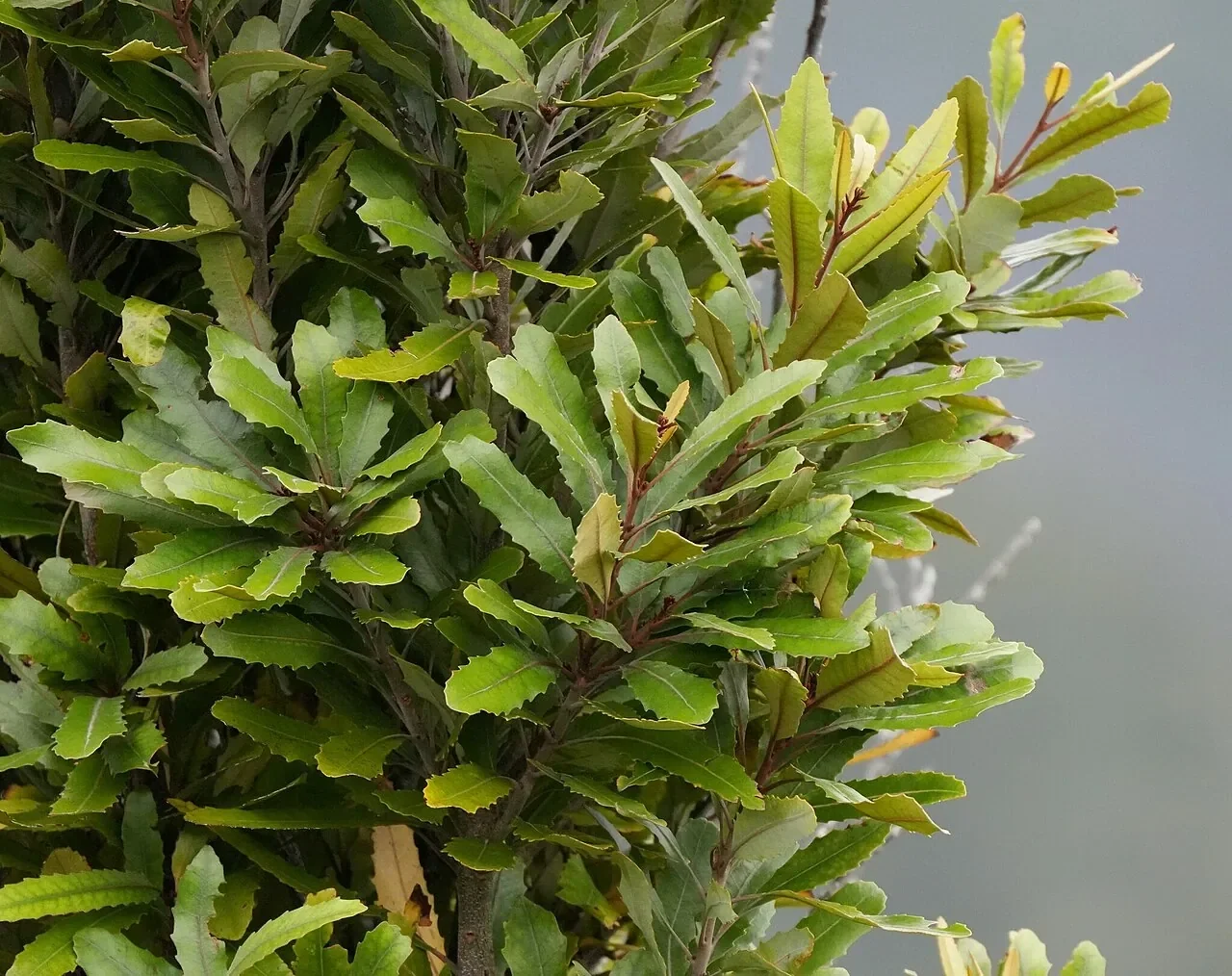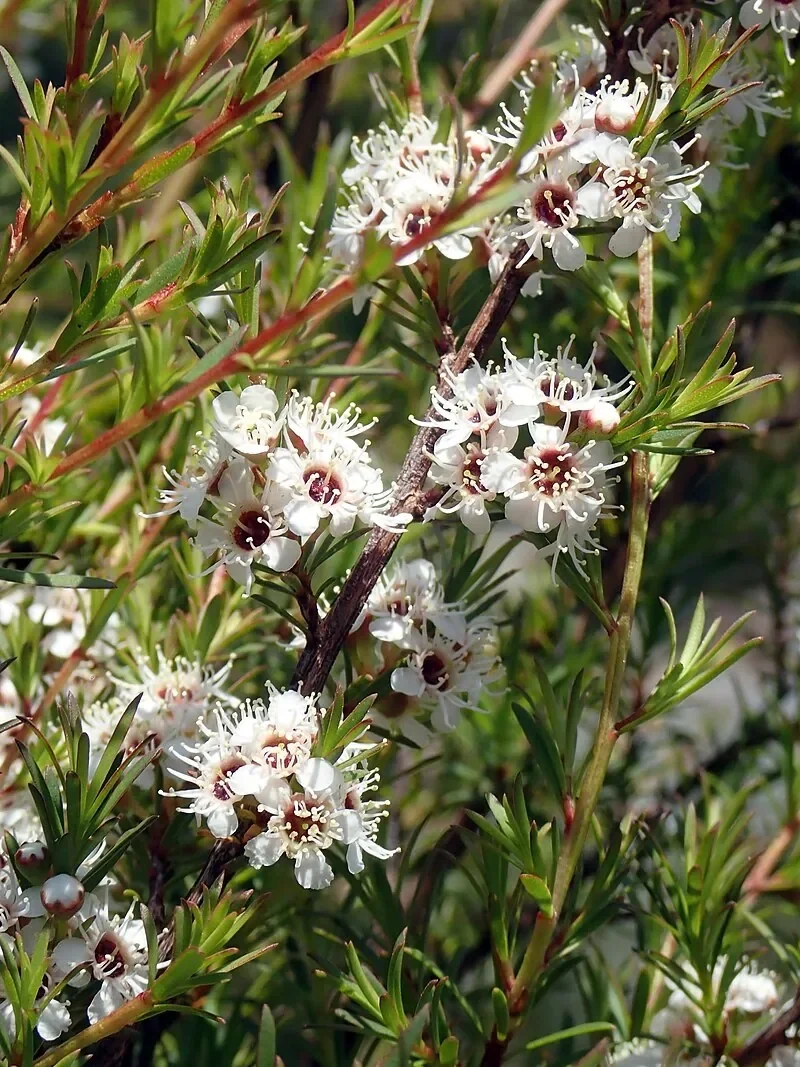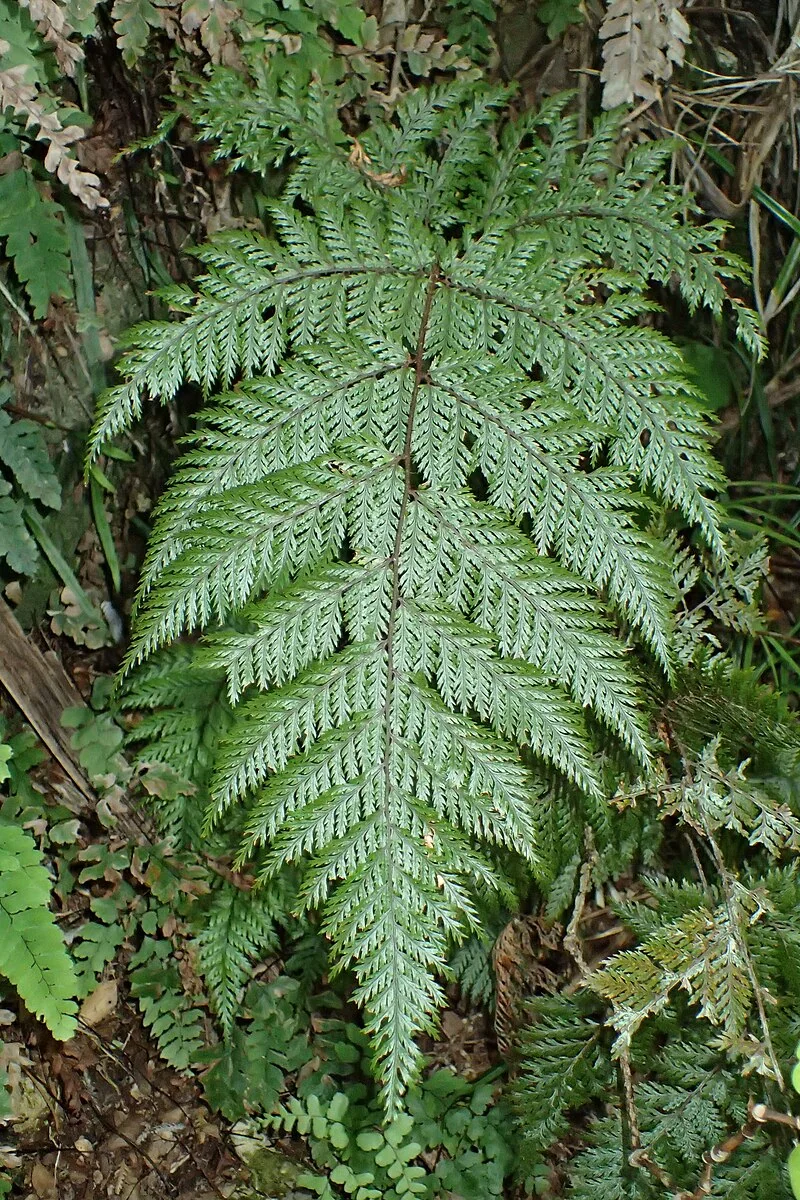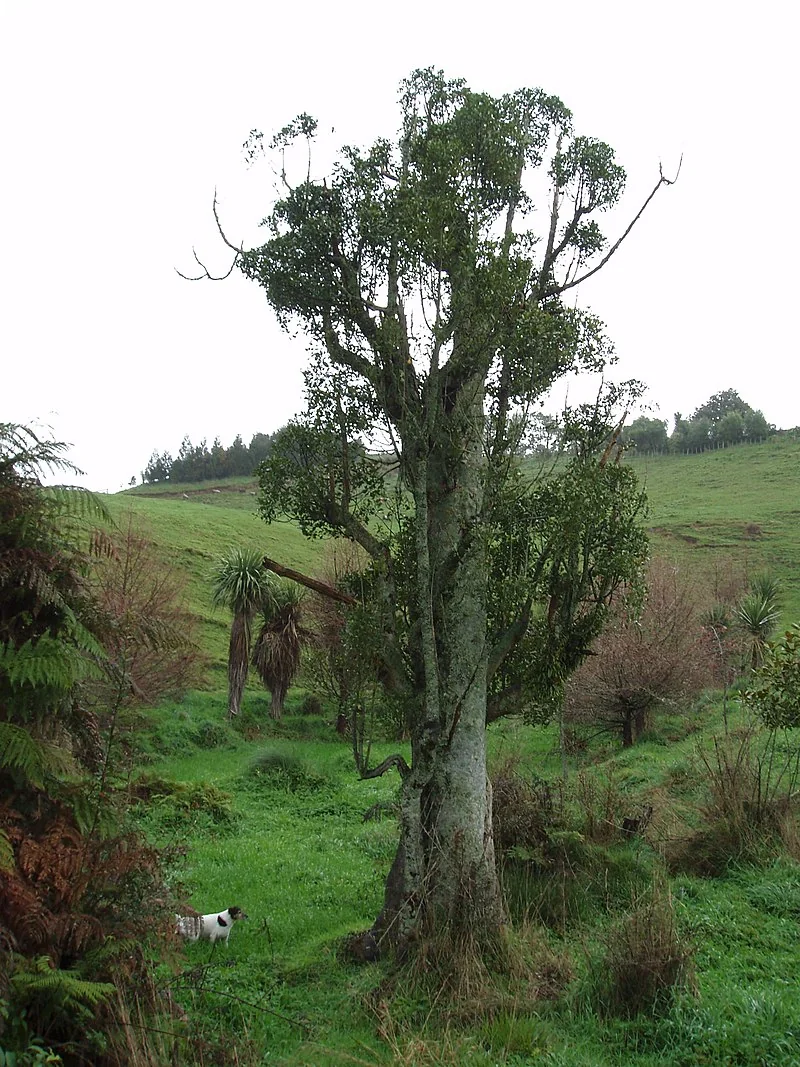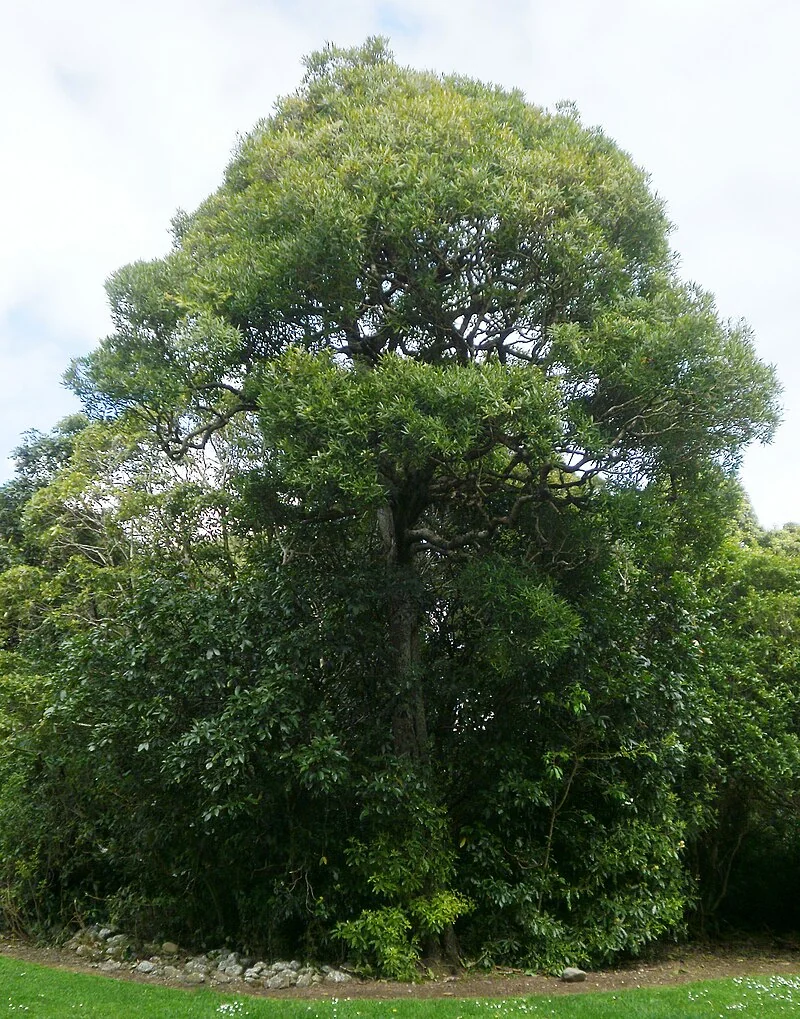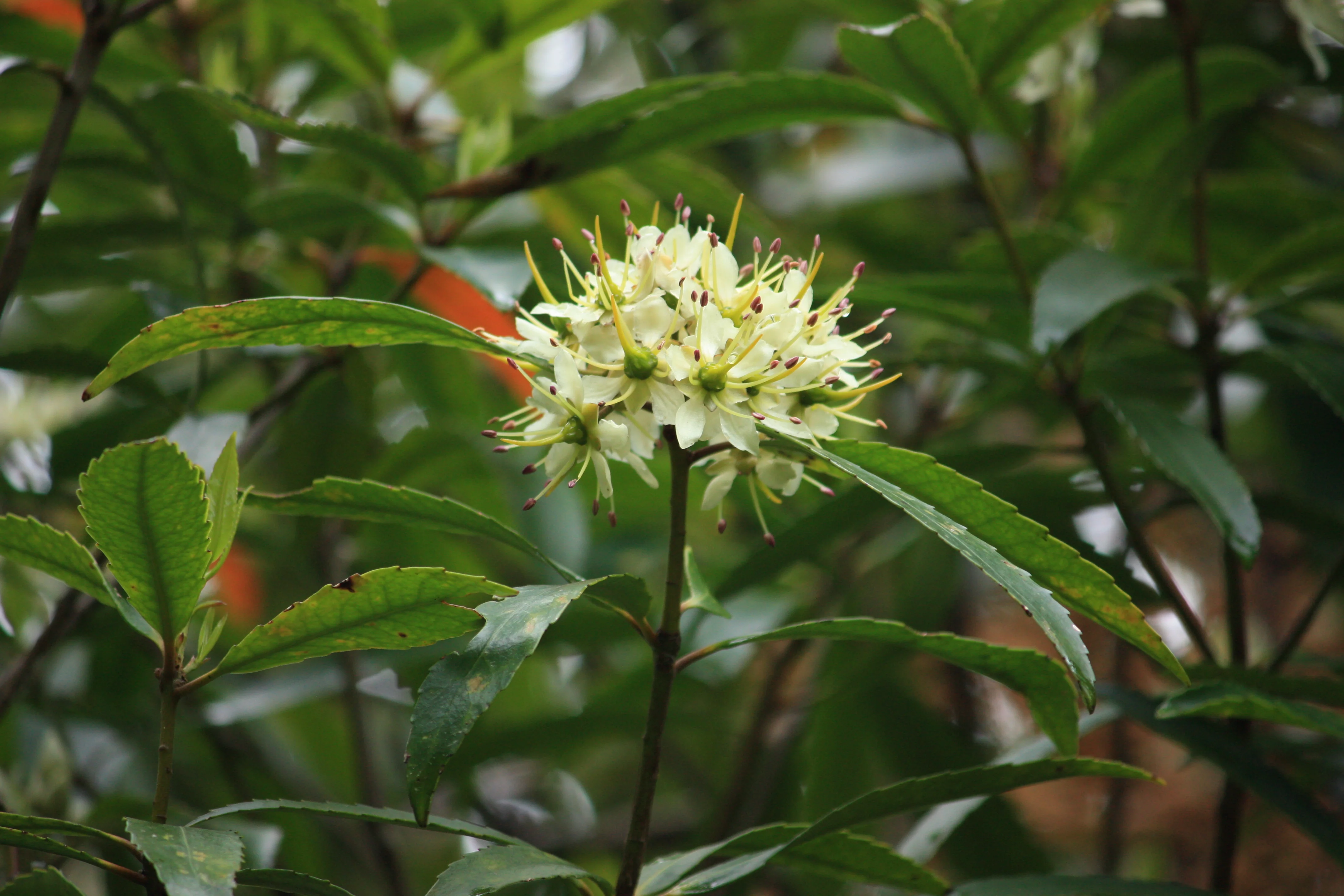
Tāwari
Ixerba brexioides
Explore more NZ native plant guides in our index.
Tāwari ( Ixerba brexioides ), also known as Whākou, is a stunning native New Zealand tree, celebrated for its spectacular display of large, fragrant white flowers in spring. This medium-sized evergreen tree is endemic to the northern North Island, typically found in lowland and montane forests. Its glossy, leathery leaves and abundant blooms make it a highly attractive specimen tree for native plant gardens, providing a striking focal point and attracting pollinators. Tāwari is a resilient and aesthetically pleasing tree that adds a touch of natural elegance and year-round interest to any landscape, showcasing the rich biodiversity of New Zealand's forests.

Tāwari ( Ixerba brexioides ), also known as Whākou, is a stunning native New Zealand tree, celebrated for its spectacular display of large, fragrant white flowers in spring. This medium-sized evergreen tree is endemic to the northern North Island, typically found in lowland and montane forests. Its glossy, leathery leaves and abundant blooms make it a highly attractive specimen tree for native plant gardens, providing a striking focal point and attracting pollinators. Tāwari is a resilient and aesthetically pleasing tree that adds a touch of natural elegance and year-round interest to any landscape, showcasing the rich biodiversity of New Zealand's forests.
Quick Facts
Tree Summary
| Scientific Name | Ixerba brexioides |
|---|---|
| Common Name | Tāwari, Whākou |
| Family | Strasburgeriaceae |
| Height | Up to 10 m |
| Spread | Up to 5 m |
| Light | Full sun to partial shade |
| Soil | Moist, well-drained, fertile soils |
| Water Needs | Moderate to high |
| Frost Tolerance | Low to Moderate |
| Salt Tolerance | Low |
| Growth Rate | Medium |
| Lifespan | Long |
Climate Best Suited to
Regional Suitability
Tāwari ( Ixerba brexioides ) is native to the northern North Island of New Zealand, typically found in lowland and montane forests. It thrives in mild, temperate climates with high humidity and consistent rainfall. It prefers sheltered locations, protected from strong winds and harsh frosts. Its natural habitat includes forest understoreys and damp gullies, indicating a preference for cooler, shadier conditions. It can be successfully cultivated in similar temperate regions, provided it has good drainage and protection from extreme heat or prolonged severe frosts when young.
| City | Climate Suitability |
|---|---|
| Whangārei | Ideal |
| Auckland | Ideal |
| Hamilton | Ideal |
| Tauranga | Ideal |
| Rotorua | Ideal |
| Gisborne | Ideal |
| New Plymouth | Ideal |
| Napier | Ideal |
| Whanganui | Ideal |
| Palmerston North | Ideal |
| Wellington | Ideal |
| Nelson | Ideal |
| Christchurch | Ideal |
| Dunedin | Ideal |
| Invercargill | Ideal |
Natural Habitat
North Island Distribution
Understand the natural habitat of Tāwari ( Ixerba brexioides ), which is found throughout the northern North Island of New Zealand, in lowland and montane forests. This section details its geographical distribution, preferred environmental conditions, and the types of ecosystems where it naturally occurs.
- Widespread across the northern North Island.
- Found in lowland and montane forests, often in damp gullies and understoreys.
- Prefers sheltered sites with good air circulation.
- Thrives in full sun to partial shade.
Its broad habitat range highlights its adaptability and resilience, making it a fascinating subject for ecological study.
Plant Conservation Efforts
Conservation Status
While currently listed as 'Not Threatened', Tāwari ( Ixerba brexioides ) is an endemic New Zealand species, and its conservation is important for maintaining the country's unique biodiversity. Its role in supporting native pollinators highlights its ecological value.
- Monitoring of wild populations to assess potential threats.
- Protection of diverse habitats where it naturally occurs.
- Cultivation in gardens helps to preserve genetic diversity.
- Public awareness of endemic species importance.
By growing Tāwari, gardeners contribute to the appreciation and informal conservation of this valuable native tree.
Detailed Growing Requirements
Advanced Growing Tips
A more in-depth look at the specific conditions and care practices required for successfully growing Tāwari ( Ixerba brexioides ). This section provides comprehensive guidance for enthusiasts and professional growers aiming to cultivate this graceful native tree.
- Advanced soil preparation techniques for moist, fertile conditions.
- Detailed light and temperature preferences, including considerations for sheltered sites.
- Specialized watering methods to maintain consistent soil moisture without waterlogging.
- Considerations for pruning to maintain desired size and shape.
Planting Guide
Best Time to Plant
The best time to plant Tāwari is during autumn or spring, when temperatures are mild and rainfall is more consistent. This allows the tree to establish its root system before the extremes of summer heat or winter cold.
Choosing a Location
Select a site with full sun to partial shade and moist, well-drained, fertile soil. Tāwari is ideal for planting in the understorey of larger trees, in sheltered garden beds, or as a specimen tree in a protected location. Ensure it has adequate space for its mature size.
Planting Steps
- Dig a hole twice the width of the root ball and the same depth.
- Gently remove the tree from its container, being careful not to disturb the roots.
- Place the tree in the hole, ensuring the top of the root ball is level with the surrounding soil.
- Backfill with amended soil, firming gently around the base of the tree.
- Water thoroughly immediately after planting to settle the soil.
- Apply a layer of organic mulch to help retain moisture and suppress weeds, keeping it away from the trunk.
Initial Care
Water regularly during the first 6-12 months to help establish a strong root system. Once established, Tāwari is reasonably low maintenance and requires less frequent watering. Protect young trees from strong winds and severe frosts if necessary.
Ecological Role
Forest Ecosystem Importance
The ecological importance of Tāwari ( Ixerba brexioides ) within its native New Zealand ecosystems is significant. Its abundant flowers provide nectar for native insects, particularly bees, making it an important species for supporting pollinator populations. Its seeds may also be a food source for small birds, contributing to the local food web and aiding in seed dispersal.
- Flowers provide nectar for native insects, especially bees.
- Seeds may be a food source for native birds.
- Contributes to biodiversity in diverse forest ecosystems.
As an endemic species, it is an integral part of the unique biodiversity that has evolved in New Zealand, supporting the delicate balance of its natural habitats.
Uses and Significance
Garden Uses
- Excellent specimen tree for larger gardens.
- Suitable for native forest restoration and revegetation.
- Provides year-round interest with evergreen leaves and spring flowers.
- Attracts pollinators, such as bees, to its flowers.
Landscaping Applications
Garden Design Uses
Tāwari ( Ixerba brexioides ) is a highly attractive and versatile tree for various landscaping applications, particularly in native and shaded gardens. Its graceful form and spectacular spring flowers make it a valuable asset.
- Ideal as a specimen tree for larger gardens and parks.
- Excellent for native forest restoration and revegetation projects.
- Provides year-round interest with evergreen leaves and spring flowers.
- Suitable for mass plantings or as an accent plant.
Its ability to thrive in sheltered, shaded conditions and its aesthetic appeal make it a popular choice for creating lush and beautiful native landscapes.
Seasonal Care Calendar
Spring
New growth emerges, and spectacular white flowers appear. This is an ideal time for planting new Tāwari specimens. Ensure consistent moisture for young trees and protect them from strong winds if necessary. A light feed with a balanced slow-release fertilizer can encourage vigorous growth.
- Ideal time for planting.
- Ensure consistent moisture for new trees.
- Light fertilization if needed.
Summer
Tāwari is actively growing and may produce developing seeds. Consistent watering is crucial, especially during dry spells, to prevent stress. Monitor for pests and diseases, though it is generally quite resilient.
- Active growth.
- Consistent watering is essential.
- Monitor for pests and diseases.
Autumn
Growth slows as temperatures cool. This is another good time for planting, allowing roots to establish before winter. Minimal care is required for established trees, but ensure they remain adequately hydrated.
- Good time for planting.
- Minimal care for established trees.
- Ensure adequate hydration.
Winter
Tāwari is evergreen and provides year-round interest. It is moderately frost-tolerant, but in very cold regions, young trees may benefit from some protection. Ensure good drainage to prevent root issues in wet conditions.
- Evergreen, provides year-round interest.
- Protect young trees from severe frost.
- Ensure good drainage.
When to Prune and How Much
Minimal Pruning
Tāwari generally requires minimal pruning to maintain its natural form. The primary reason for pruning is to remove dead or damaged branches, or to shape the tree as desired. Its natural growth habit is often quite attractive, so extensive pruning is rarely needed.
- Remove dead or damaged branches as needed.
- Light shaping to maintain desired form.
- Best done in late winter or early spring before new growth.
- Use clean, sharp tools.
Avoid heavy pruning, as this can stress the tree. Allow it to develop its natural, graceful canopy.
How to Grow Tāwari
Tāwari, also known as Whākou, is a stunning native New Zealand tree, celebrated for its spectacular display of large, fragrant white flowers in spring. This medium-sized evergreen tree is endemic to the northern North Island, typically found in lowland and montane forests. Its glossy, leathery leaves and abundant blooms make it a highly attractive specimen tree for native plant gardens, providing a striking focal point and attracting pollinators. Tāwari is a resilient and aesthetically pleasing tree that adds a touch of natural elegance and year-round interest to any landscape, showcasing the rich biodiversity of New Zealand's forests. Understanding its propagation methods is key to successfully growing this delightful species.
From Seed
Propagating Tāwari from fresh seed is a viable method, though germination can be slow and may require stratification. Collect ripe seeds in late autumn or early winter. Clean the seeds thoroughly to remove any fleshy pulp. Sow the seeds in a tray filled with a well-draining seed-raising mix, lightly covering them. The seeds typically require a period of cold stratification (e.g., refrigerate for 2-3 months) to break dormancy. Maintain consistent moisture in the seed tray and keep it in a warm, sheltered location. Germination can take several weeks to months after stratification. Once seedlings have developed a few true leaves, they can be potted into individual containers and grown in a sheltered environment before planting out.
From Cuttings
Semi-hardwood cuttings are a reliable method for propagating Tāwari, ensuring that new plants retain the exact characteristics of the parent. Take 10-15 cm cuttings from healthy, semi-hardwood stems in late summer or early autumn. Remove the lower leaves and dip the cut end in a rooting hormone. Insert the cuttings into a well-draining propagation mix (e.g., sand and perlite). Keep the cuttings in a warm, humid environment, out of direct sunlight, perhaps under a plastic dome or in a propagator. Rooting typically occurs within 8-12 weeks. Once rooted, the new plants can be potted on and grown in a sheltered environment until they are ready for planting.
Pests and Diseases
Tāwari is generally a robust tree, but it can be susceptible to certain pests and diseases, especially if not grown in optimal conditions.
Common Pests
- Aphids: Can infest new growth. Treat with insecticidal soap or remove manually.
- Scale Insects: May be present on stems and leaves. Treat with horticultural oil or appropriate insecticides.
Common Diseases
- Sooty Mould: Often associated with scale insect infestations, it can cover leaves and reduce photosynthesis. Address the underlying pest issue.
- Root Rot: Caused by overwatering or poor drainage. Ensure well-drained soil.
Good garden hygiene, proper watering, and adequate air circulation are key to preventing most pest and disease issues. Regular inspection will help catch problems early.
Cultural Significance
The Ixerba brexioides, also known as tāwari or whākou, holds significant cultural importance, particularly for the Māori people of New Zealand.
Key Aspects of Cultural Significance Include:
- Adornment and Celebration: The beautiful white flowers of the Ixerba brexioides (whākou) were historically used by Māori to create garlands and necklaces, especially for festive occasions and adornment.
- Traditional Dye: The bark of the tāwari tree was traditionally utilized to produce a black dye, which was then used on flax.
- Seasonal Marker: The mass flowering of Ixerba brexioides served as an important natural indicator for Māori, signaling the appropriate time to harvest certain crops.
- Economic and Culinary Value: The tree is a rich source of nectar, leading to the production of tāwari honey, which is popular and sold in New Zealand food shops. This honey is characterized by its light color and butterscotch flavor.
- Aesthetic and Ecological Appreciation: Beyond its practical uses, Ixerba brexioides is recognized for its striking beauty, with conspicuous white flowers and dark green foliage, making it one of New Zealand's most attractive trees. It is also valued in landscaping for its ecological role in supporting birdlife and biodiversity.
Bonus Tip
An Anagrammatic Name
The scientific name of Tāwari, Ixerba brexioides, has an interesting origin. The genus name, Ixerba, is an anagram of Brexia, a genus of trees found in Madagascar and East Africa. This unusual naming convention highlights a perceived resemblance between Tāwari and members of the Brexia genus, a testament to the keen observations of early botanists.
